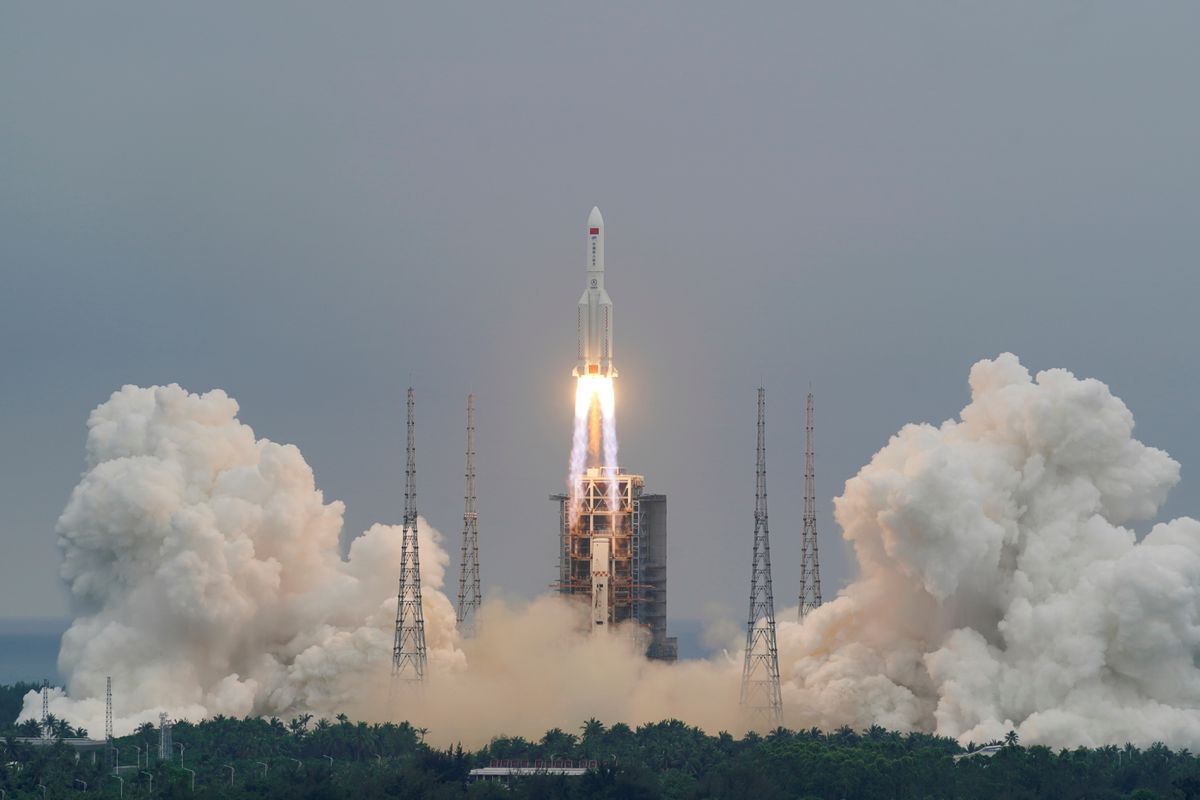Remnants of a Chinese rocket crashed into the Indian Ocean on Sunday in one of the largest uncontrolled re-entries of a spacecraft in history.
The coordinates given by Chinese state media, citing the China Manned Space Engineering Office, put the point of impact in the ocean, west of the Maldives archipelago.
Debris from the Long March 5B has had some people looking warily skyward since it blasted off from China's Hainan island on April 29, but the China Manned Space Engineering Office said most of the debris was burnt up in the atmosphere.
The news ended days of speculation about where debris from the rocket's core section, which was 30 metres long and 21 tonnes heavy, would land.
No one is believed to have been injured, but the incident prompted NASA to criticise China for “failing to meet responsible standards regarding their space debris” and a lack of transparency.
With most of the Earth's surface covered by water, the odds of populated area on land being hit had been low, and the likelihood of injuries even lower, according to experts.
But uncertainty over the rocket's orbital decay and China's failure to issue stronger reassurances in the run-up to the re-entry fuelled anxiety.
"Spacefaring nations must minimize the risks to people and property on Earth of re-entries of space objects and maximize transparency regarding those operations," NASA Administrator Bill Nelson, a former senator and astronaut who was picked for the role in March, said in a statement after the re-entry.
"It is clear that China is failing to meet responsible standards regarding their space debris."








